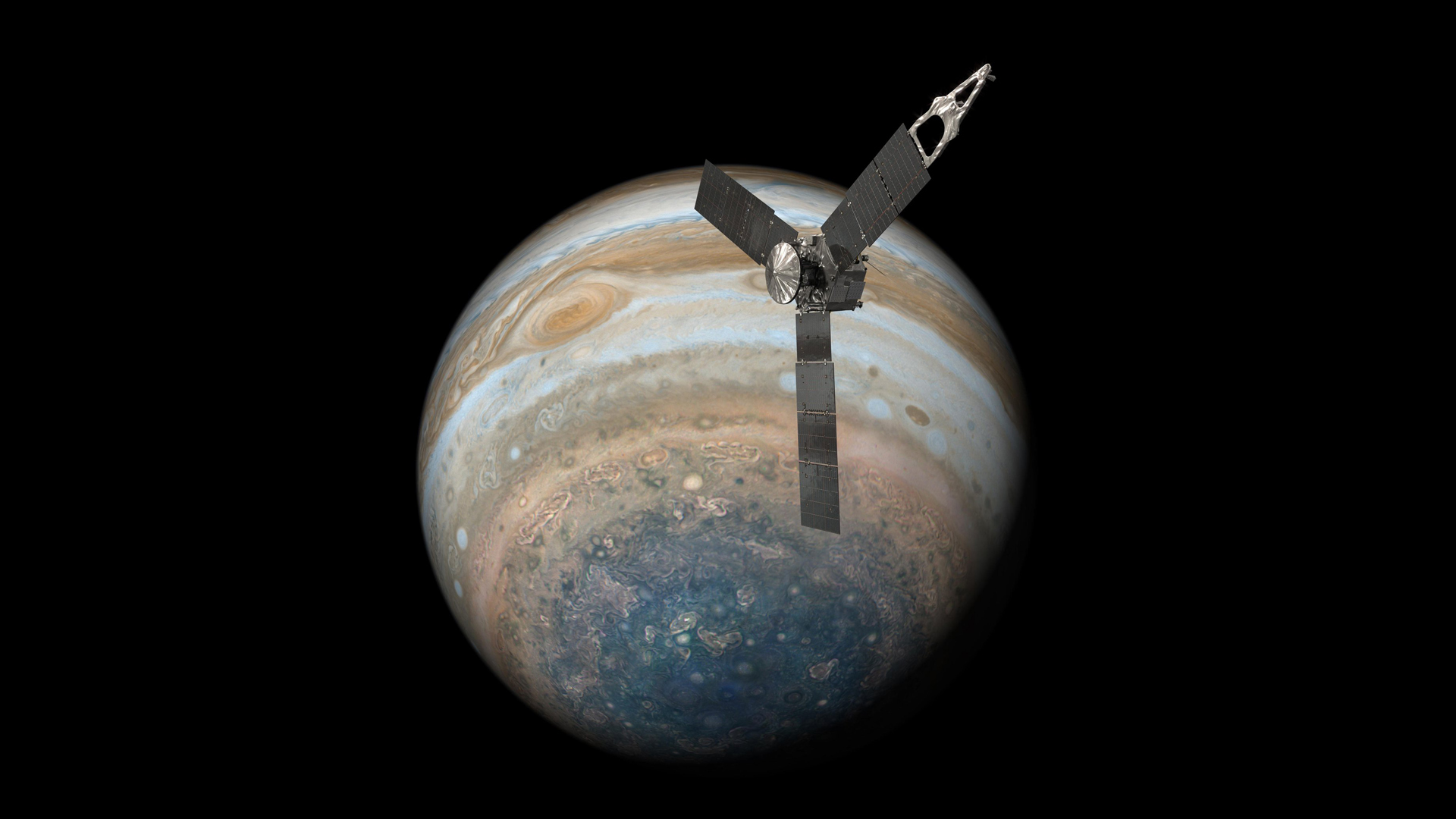A spinning NASA spacecraft, which has been studying the moons of Jupiter—the solar system’s most massive planet—is reportedly no longer operational. However, the space agency has not yet issued any official confirmation regarding its current status.
Launched in 2011, the Juno probe successfully entered Jupiter’s orbit in 2016, embarking on what was initially conceived as a 20-month scientific endeavor. Now, almost a decade later, the spacecraft has far exceeded its projected operational period, yielding unparalleled research into the Jovian system. It continues to provide invaluable observations of the gas giant, its numerous moons, and the planet’s elusive ring system.
NASA’s Juno mission, which received several extensions including a 2021 renewal guaranteeing operations until September 30, 2025, now faces an uncertain operational future. With that deadline having passed and the U.S. government currently shut down, there is no immediate confirmation regarding the spacecraft’s ongoing status.

The Juno spacecraft’s mission has been extended, significantly expanding its scientific objectives. Previously dedicated to studying Jupiter’s interior and magnetosphere, the probe will now also investigate the planet’s intricate ring system and its prominent moons.
Lori Glaze, then-director of NASA’s planetary science division, affirmed that by extending the orbiting observatory’s scientific objectives, the Juno team would begin tackling a breadth of research historically expected of flagship missions. The mission has since demonstrated its capacity to fulfill that ambitious expectation.
In recent years, the spacecraft has executed close flybys of Jupiter’s moons—Ganymede, Europa, and Io—collecting vital data on their geology, surrounding environments, and composition. Beyond these lunar investigations, the mission has also examined Jupiter’s subtle ring system, all while persistently charting the planet’s formidable magnetic and gravitational fields.
These findings are instrumental in preparing for upcoming missions, most notably NASA’s Europa Clipper. The agency’s next major Jupiter-bound spacecraft, Europa Clipper, launched in October 2024 and is projected to arrive at Jupiter in April 2030. Its primary objective will be a comprehensive study of its namesake moon. A premature conclusion to Juno’s mission, before Europa Clipper’s arrival, would create a substantial, multi-year void in dedicated observations of this critical region of our solar system, leaving scientists without new data until the end of the decade.
NASA’s Juno mission has been officially extended to operate through September 2025, an update confirmed by Molly Wasser, Media Lead for the Planetary Science Division, in an email to Space.com. Wasser further clarified that all future decisions concerning the Jupiter probe’s operational status would strictly comply with legal mandates.
The operational status of NASA’s Juno spacecraft currently remains unknown, a direct consequence of the ongoing government shutdown. Agency officials, citing a lapse in government funding, confirmed that NASA is closed and unable to provide updates. Inquiries regarding the probe’s activity, including whether it is still operating or has powered down, cannot be addressed until an appropriation or continuing resolution is approved.
During government shutdowns, only missions categorized as “excepted activities” are authorized to maintain operations or communications. These essential functions typically encompass those required for protecting life, property, or national security. Adding to these restrictions, NASA’s specific continuity plans mandate that carryover funding may only be allocated to “presidential priorities,” thereby significantly limiting the science programs able to proceed during a lapse in appropriations.
The Juno mission faces an uncertain future. Lacking protection under specific categories and entirely defunded in the President’s fiscal year 2026 budget request, the spacecraft’s operational continuation appears to be a low priority. Its uncertain fate will persist until normal government operations are fully reinstated.







